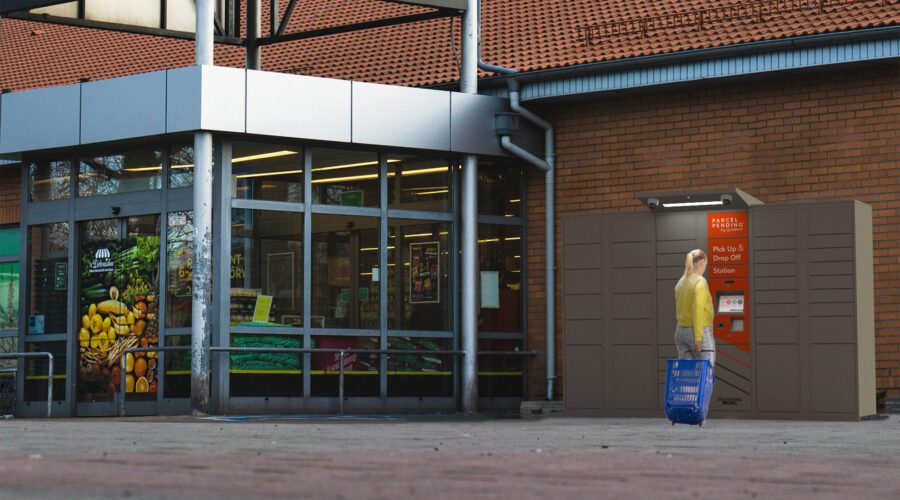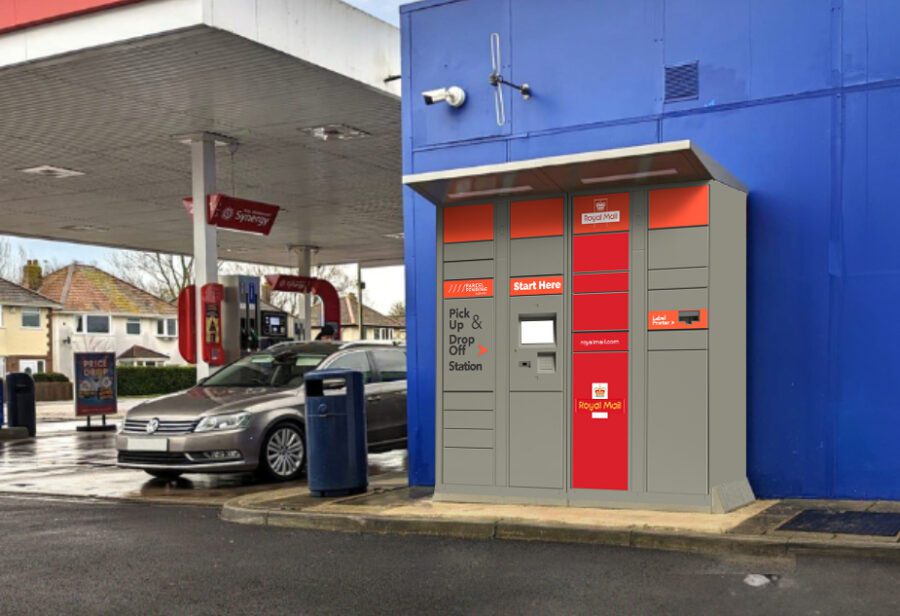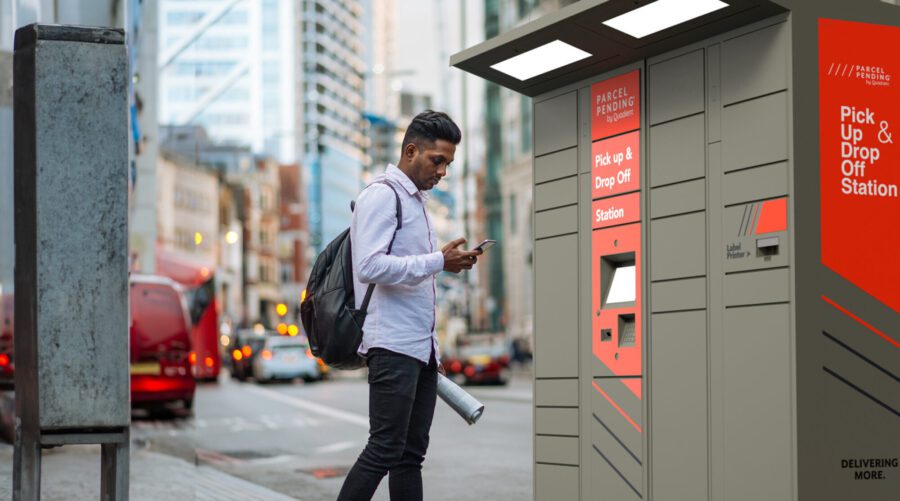
Courier
Optimizing Mail Center Operations: Why Open Locker Networks are the Future of OoH Delivery
Written by: Parcel Pending
7 Min Read
Published: May 18, 2024
Updated: May 22, 2024
The e-commerce industry is witnessing an unparalleled boom, with the United States alone experiencing a year-over-year increase in sales by 10.2%, which amounts to almost $385 billion.1 Due to this sales surge, the number of daily parcel deliveries has significantly increased, creating unique challenges for carriers, retailers, cities, and urban planners.
In this blog, we’ll explore these challenges and discuss how open locker networks can help mail centers provide a sustainable solution for the future of parcel delivery and returns.
State of the Industry: The eCommerce Boom and Its Impact
The United States Postal Service’s (USPS) mail volume is down to just 117 billion units from a high of 213 billion units in 2013.2 However, revenue generated from shipping packages is up due to the rise of online shopping. In fact, eCommerce is estimated to account for 22% of global retail sales, with parcel shipping volumes projected to reach a staggering 200 billion by 2025.3 This rapid growth has led to significant and alarming environmental and logistical challenges, particularly in the last-mile delivery process.
Environmental Concerns
The last mile of delivery is not just a logistical challenge; it’s a ticking time bomb for our environment. It’s a significant contributor to air pollution, roadway congestion, and CO2 emissions. The increased number of vehicle fleets on the road for deliveries, re-delivery attempts, and returns is a major concern, with shipping costs alone accounting for 14% of global greenhouse emissions.4 And, while a quarter of consumers express interest in low-impact delivery options, less than 10% are willing to pay extra to offset the environmental cost of delivery.5 Creating a last-mile strategy that is both environmentally-conscious and customer-friendly is going to be increasingly important – both in 2024 and beyond.
The Returns Dilemma
Returns not only pose environmental challenges but also have a significant financial impact on retailers and carriers. Annually, approximately 5 billion pounds of returned products end up in landfills, costing the industry billions in processing costs, shipping fees, unsellable merchandise, and fraud. In 2023, returns accounted for 14.5% of all retail sales of all retail sales, down from 16.6% in 2022, yet still a figure that retailers and carriers are eager to reduce.6
The Inefficiencies of Home Delivery
The inefficiencies of home delivery are not just a minor inconvenience but a significant contributor to congestion, accidents, deteriorating infrastructure, and pollution in major cities worldwide. To satisfy increasing consumer demand for next-day and same-day delivery, carriers frequently send trucks to the same home several times a day, and different carriers deliver multiple packages to the same address. This inefficient practice is not sustainable in the long run.
The High Cost of Free Delivery
Free delivery is a top motivator for 53% of consumers.7 According to a survey by Deloitte, 60% of customers say they are willing to increase their purchases from a retailer that offers free shipping.8 However, with more shopping comes more shipping and, inevitably, delivery issues. Failed deliveries are a growing problem that significantly impacts a retailers’ expenses. With 41% of consumers attributing the responsibility for failed deliveries to the retailer, retailers suffer reputational damage, diminished customer satisfaction, and reduced brand loyalty. Retailers must now balance managing delivery costs with ensuring a seamless and satisfactory customer experience. This puts further pressure on carriers to deliver an exceptional experience or risk losing retailer contracts.
Package Theft on the Rise
The statistics are startling: over 75% of Americans have had a package stolen in the past year – an estimated value of $13.4 billion; shipping costs lost to package thefts during the same period totaled $1.11 billion.9 Despite carriers’ best attempts to make successful deliveries, packages can wind up left in seemingly “safe” places that result in “porch pirates” or “building bandits” stealing the parcels.
The Emerging Solution: Out-of-Home Delivery
In response to the challenges above, out-of-Home (OoH) delivery options, such as click-and-collect, post office collection, mail service center/carrier store collection, and return drop-off locations, are becoming more widespread. Now, carriers must look to ensure successful customer adoption of these alternatives, creating a solution that is both operationally efficient for their business services as well as easy and convenient for consumers.
OoH delivery provides convenience by offering flexible delivery locations, allowing recipients to choose a pick-up point that suits their needs, such as parcel lockers, designated package center pick-up locations, or local stores. Ideally, these locations are along routes that consumers already travel on their commute or while running errands, thereby encouraging a practice known as trip-chaining. Widespread OoH delivery would lead to an estimated 66% decline in carrier vehicle miles traveled and a 15% decrease in the cost of each package delivered.10
Expanding Options for Consumers with Carrier-Specific Lockers
To help augment their OoH offerings, some carriers have created their own locker-based delivery networks. These delivery models are rapidly gaining traction – both overseas in Europe and Asia, as well as in North America. However, these networks have a number of drawbacks, most notably that only a given carrier’s customers can use these private locker networks. This leads these electronic lockers to lack the desired security, accessibility, and consistency in experience that consumers now expect from shopping and shipping providers.
Open Network Lockers: Delivering More Value and Convenience
Enter carrier-agnostic locker networks, or as they’re sometimes referred to, open locker networks. An open locker network is a network of parcel lockers that can be used by any carrier or customer, providing a more accessible and flexible solution for OoH delivery.
When more carriers deliver to the same, centralized locations, consumers are much more likely to come to these locations to collect their parcels. This is especially true if consumers know they can handle all their shipping needs – whether it’s collecting online orders or returning unwanted items – all in one place, such as with Parcel Pending by Quadient’s Open Locker Network.
The benefits of leveraging Parcel Pending’s Open Locker Network include:
- MORE Cost-Effective: Parcel Pending by Quadient assumes installation and maintenance costs for the lockers, with carriers paying monthly or with per-parcel contracts.
- MORE Convenient: Consumers can pick up packages from any carrier at a single location. Most of these locations are open 24/7/365.
- MORE Sustainability: By consolidating deliveries and minimizing failed delivery attempts, fewer delivery vehicles are required, thereby reducing city congestion and pollution.
- MORE Secure: Improved security and reduced package theft, as parcels are stored in secure lockers until picked up by the recipient.
- MORE Consistency: Customer experience soars when consumers can pick up packages on their schedule.
- MORE Efficiency: Carriers enjoy increased efficiency as they deliver multiple packages to a single location.
- MORE Revenue: OoH delivery and returns reduce shipping and return costs for carriers and any retail partners.
Parcel Pending’s Open Locker Network: In Good Company
The success of open locker networks is exemplified by the participation of major carriers such as Royal Mail, Evri, DPD, and UPS in Parcel Pending’s Open Locker Network in the UK. Parcel Pending’s outdoor and indoor Open Locker Network delivers a key benefit for consumers: the ability to send, return, and pick up parcels at a time that suits them.
Royal Mail, the UK’s largest parcel delivery company, is the most recent carrier to join the UK Open Locker Network under a multi-year contract. Royal Mail will start offering returns and outbound drop-off services in an initial 200 sites by May 2024, with the expectation that they will ultimately use lockers in 3,000 locations as the UK network grows in the coming years.
Evri, another major UK parcel delivery market player, joined the network in 2023 to help manage its 700+ million parcel deliveries a year. Technology is crucial in the company’s strategy to drive efficiency and enhance service. Evri further enhanced the convenience of its locker delivery service by becoming the first carrier to use Parcel Pending’s Drop Box locker with printer capability. This added functionality allows consumers who might not have a printer at home to print labels directly at the locker, simplifying their returns process; this also means that carriers do not have to prepare labels for printerless parcels during collection rounds.
The rapid growth of e-commerce has created new challenges for parcel management, including environmental concerns, logistical inefficiencies, and the high cost of free delivery. Parcel Pending’s Open Locker Network emerges as a promising solution, offering both carriers and consumers flexibility, convenience, and cost-effectiveness.
Ready to deliver more for your customers? Contact a Parcel Pending representative today and ask about joining our Open Locker Network.
Sources:
- Canaves, Sky. US Retail ECommerce Marketplaces Forecast 2023. www.emarketer.com. June 6, 2023. https://www.emarketer.com/content/us-retail-ecommerce-marketplaces-forecast-2023
- Placek, Martin. United States Postal Service’s total mail volume from 2004 to 2023. www.statista.com. March 6, 2024. https://www.statista.com/statistics/320234/mail-volume-of-the-usps/
- Von Szczepanski, K., Wagener, C., Mooney, T., et al. Only an Ecosystem Can Solve Last-Mile Gridlock in Package Delivery. www.bcg.com. June 24, 2021. https://www.bcg.com/publications/2021/solving-the-package-delivery-system-problems-with-a-new-ecosystem
- Damen, Alexis. Sustainable Retail: 15 Ways to Be More Sustainable + Examples. www.shopify.com. September 20, 2023. https://www.shopify.com/retail/sustainability-retail
- Genc, Lana. When will out-of-home deliveries reach their potential?. www.maersk.com. March 15, 2023. https://www.maersk.com/insights/growth/2023/03/15/potential-of-out-of-home-delivery
- Lebsack, Lexy. After hitting an all-time high, returns dropped in 2023 thanks to new industry-wide strategies. www.glossy.co. January 18, 2024. https://www.glossy.co/fashion/strategies-to-mitigate-retail-returns-nrf-2023-retail-return-rate/
- Woodward, Matthew. Ecommerce Statistics 2024 – Everything You Need to Know. www.searchlogistics.com. February 21, 2024. https://www.searchlogistics.com/learn/statistics/ecommerce-statistics/
- Speed Commerce. The Psychology of Free Shipping: Should You Offer It?. www.speedcommerce.com. n.d. https://www.speedcommerce.com/insights/the-psychology-of-free-shipping/
- Capital One Shopping. Package Theft Statistics. capitaloneshopping.com. February 18, 2024. https://capitaloneshopping.com/research/package-theft-statistics/
- Von Szczepanski, K., Wagener, C., Mooney, T., et al. Only an Ecosystem Can Solve Last-Mile Gridlock in Package Delivery. www.bcg.com. June 24, 2021. https://www.bcg.com/publications/2021/solving-the-package-delivery-system-problems-with-a-new-ecosystem



